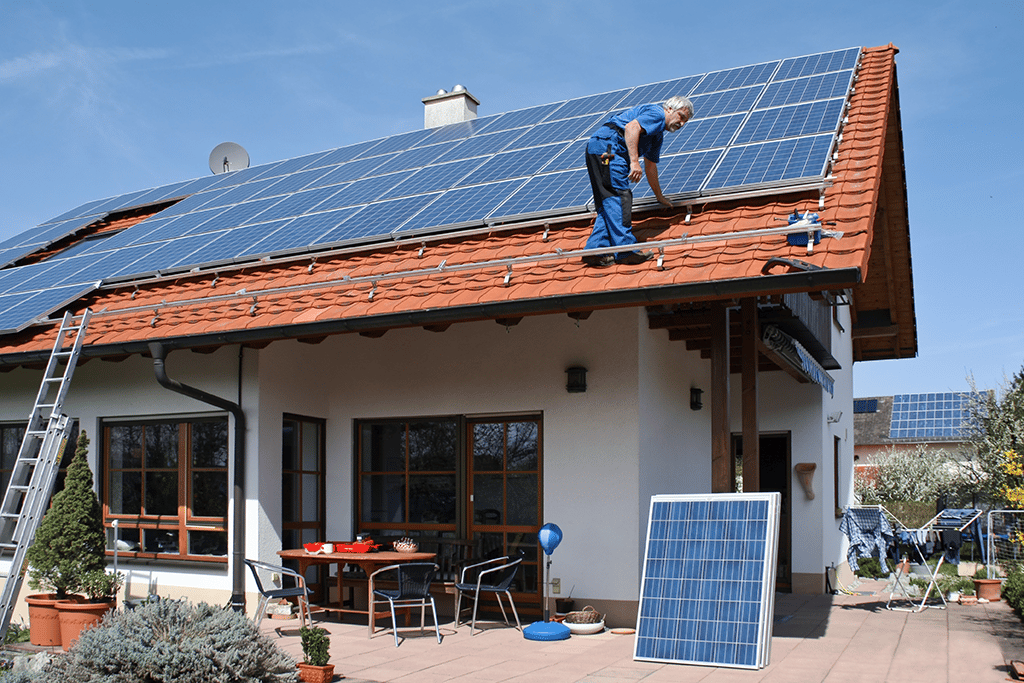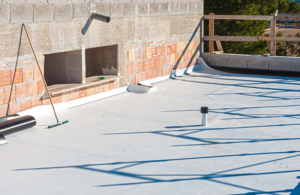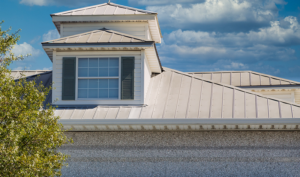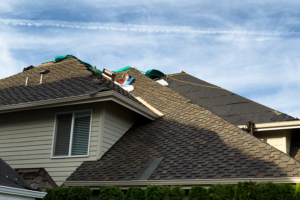Solar panel installations have come a very long way technology-wise and can be mounted on roofs, patio covers, awnings & gazebos. So, where should you mount a solar panel array on your home?
The design of a solar energy array on a shingled, tiled, pitched, or flat roof is influenced by whether the system will be attached to the roof’s rafters or decking, and there are advantages to each. The best install method depends on the entire building’s structural support and the solar racking or mounting system installment procedures. Attachment directly to the rafters often offers the best structural support but may require additional roof penetration during the installation process. Solar panel racking systems are a form of panel roof mounts for solar cells that protect your roof from damage and maintain your roof warranty. Roof-mounted solar is preferable to ground support for several reasons and is generally far more resource-efficient. Solar panels can be mount to almost any roof type, including clay tile roofs, asphalt shingle roofs, corrugated metal roofs, and even angled roofs.
A roof surface transfers loads onto a building’s structure. Positive loads push down on the roof (snow and heavy rain loads), and negative loads pull up (wind loads). When a solar power system is mounted to a roof, more components are added to the total load. Positive and negative loads are now carried through the solar system and roof mounts to the building structure. Attaching solar to the rafters eliminates a few intermediate load transfers and gets right to the core building components. Other roof mount systems have their advantages, especially on residential roofs in standard roofing builds.
Rafters
An example of an integrated mounting system is the EcoX rail-less racking installation with attachments staggered across rafters. Staggering spreads the downforce across all rafters and is a best practice in areas with snow loads and high winds. Deck-mounting options can work well to easily verify the decking thickness, material, condition, and connection to the structure.
Whether deck or rafter-attached, sealing roof penetrations are still necessary. Flashing materials are the same in either situation, but the type of fasteners or screws differ. PLP includes 1 1/2-in. deck screws for deck-attached systems and 2 1/2-in. Lag screws for rafter-attached systems.
Attaching a solar panel installation to the rafters is the most straightforward and trusted option, but connecting to the decking works as well. Another option with deck mounting is to use solar shingles rather than a separate solar panel.
Installing solar on a metal roof is an excellent option. When we use the correctly engineered components, a solar array is attached to either the seams (standing-seam metal roof) or ribs (face-attached metal roof), in this case not to the rafters and rarely to the deck.
Patio covers, awnings, and gazebos can make your outdoor space more comfortable and functional. New products on the market can take them a step further by turning your patio cover or gazebo into a mini power plant with the addition of solar panels. If you’re considering making the upgrade to build a solar lounge, you may want to look into a solar patio cover or gazebo.
What is a solar patio cover?
Solar patio covers are part of an emerging category of solar that uses a structure other than the roof of your home or business as the framework for a solar system installation. These structures are often commonly referred to as “solar pergolas.”
Most small-scale solar installations go on the roof, but not every roof is ideal for solar. Luckily, if you have the suitable space, there are plenty of other system designs that you can use for your solar panels. These include ground-mounted solar systems (ground mounts), solar carport, and solar trees – and now you can add solar patio covers and solar gazebos to that list.
One of the significant advantages of solar patio covers, solar gazebos, and solar carports is that they don’t require additional land (one of the main drawbacks of ground-mounted solar panels). Solar panels can be installed on an existing structure, or you can choose to make an upgrade that you’ve already been considering for your home even better by incorporating solar panels into the plan.
Solar patio covers are an excellent solution for homes that don’t have ideal roofs or homeowners worried about curb appeal, but they aren’t just residential properties. Restaurants, cafes, and other commercial properties with outdoor seating space are an excellent fit for these standalone solar structures: they provide comfort for guests while simultaneously producing electricity that reduces operating costs.
How does a solar patio cover or gazebo compare to a rooftop solar installation?
Rooftop solar panels are a logical choice for many homeowners because it creates an additional function for your roof, and the average roof is well-positioned to capture sunlight. The suitability of rooftop solar is dependent on the existing roof angle, orientation, size, and exposure of the roof. However, zip code is no longer the middle rail of solar because of considerable gains in efficiency and reductions in material costs.
When you build a standalone structure (whether its ground mounted solar, a solar carport, a solar awning, or a solar patio cover), you’re starting from the ground up. As a result, you can design a system that is perfectly optimized for maximum solar electricity production. The complete customizability of a new solar structure is a significant advantage, but it also adds some significant expenses to your installation. An average 6-kilowatt solar panel system with string inverters costs $13,300 after tax credits, and patio covers and other structures can cost thousands of dollars to build. If you’re already considering both solar and a gazebo or patio cover, combining the two can make sense depending on the location, building code, and solar installer, but keep in mind that you’ll pay more than you would for a rooftop system.
How to get your solar installation
Building a standalone solar patio cover is a more complex project than installing rooftop solar on either residential or commercial buildings, so you may have to find a specialized solar installer for designing a system for you. If you are interested in a minor off-grid system to power a few lights rather than one that powers your entire home, you can also explore DIY solar options. Otherwise, give us a call and let us see how we can help.
RESOURCES
Blue Nail Roofing has a Master Elite contractor status awarded by the largest roofing manufacturer in North America, GAF. Only 2% of contractors in the US meet the rigorous standards to achieve this status, which means you can be assured you are making a good choice when selecting the professionals at Blue Nail to execute your home and business roofing repairs. Call today to schedule a professional evaluation!
Copyright © 2020 Blue Nail Enterprises. All rights reserved. | Privacy Policy
Let Us Nail Your Project!
Send us a little information about your roofing or home improvement needs and an expert will reach out shortly for an expert review of your project.







